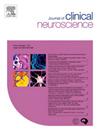A comparison of prone versus sitting position for the surgical treatment of Chiari malformation type I in children
IF 1.8
4区 医学
Q3 CLINICAL NEUROLOGY
引用次数: 0
Abstract
Objective
Posterior fossa decompression and duroplasty (PFD-D) for Chiari type I malformation (CM-I) is usually performed in the prone position. Nevertheless, few centres routinely perform it in sitting position. This study aims to compare, for the first time in the literature, the peri-operative surgical and anaesthesiologic outcomes of two similar cohorts of paediatric patients with CM-I treated with PFD-D in prone and sitting position.
Methods
Patients younger than 17 years old, who had undergone PFD-D for CM-I performed by a single surgeon between November 2013 and June 2024, were included. Surgical time, intraoperative and perioperative events, and post-operative complications were recorded. All patients had at least a 10-month follow-up.
Results
Twenty-seven patients were operated in the prone position [mean age: 9.3 years, M/F: 0.59] and twenty-five in the sitting position [mean age: 11.3 years, M/F 0.47]. 15/27 (55 %) in the prone group and 13/25 (52 %) in the sitting group had pre-operative syringomyelia. The mean operative time in sitting was significantly shorter (143 min) compared to 175 min in the prone position (p < 0.001), particularly in high BMI > 30 patients. Complications in the prone cohort included 3 post-operative pseudomeningocele (11.1 %), 3 aseptic meningitis (1 %), 1 CSF leakage (3.7 %), and 1 post-infective hydrocephalus requiring VP shunt insertion (3.7 %). In the sitting position, 1 patient developed pseudomeningocele (4 %), and another patient had a post-operative hydrocephalus (4 %) successfully treated with an endoscopic third ventriculostomy. No patient in this series developed clinical air embolism or tension pneumocephalus.
Conclusions
The study did not show any significant difference in the surgical and anaesthetic complications between the two groups of patients. Sitting position for CM-I when performed by a trained neuro-anaesthesiologic team is a safe option with similar clinical outcomes compared to the prone position.
俯卧位与坐位在儿童I型Chiari畸形手术治疗中的比较
目的后窝减压和硬膜成形术(PFD-D)治疗Chiari I型畸形(CM-I)通常采用俯卧位。然而,很少有中心在坐着时进行常规训练。本研究旨在文献中首次比较两组相似的儿科CM-I患者采用俯卧位和坐位PFD-D治疗的围术期手术和麻醉结果。方法纳入2013年11月至2024年6月期间接受单一外科医生PFD-D治疗CM-I的年龄小于17岁的患者。记录手术时间、术中、围术期事件及术后并发症。所有患者至少进行了10个月的随访。结果俯卧位27例,平均年龄9.3岁,M/F: 0.59;坐位25例,平均年龄11.3岁,M/F: 0.47。俯卧组15/27(55%)、坐位组13/25(52%)术前有脊髓空洞。坐位的平均手术时间(143分钟)明显短于俯卧位的175分钟(p <;0.001),特别是在高BMI >;30个病人。易发队列的并发症包括3例术后假性脑膜膨出(11.1%),3例无菌性脑膜炎(1%),1例脑脊液漏(3.7%),1例感染后脑积水需要静脉血栓分流器插入(3.7%)。在坐位时,1例患者出现假性脑膜膨出(4%),另1例患者术后脑积水(4%)通过内窥镜第三脑室造口术成功治疗。本系列中没有患者出现临床空气栓塞或张力性气颅。结论两组患者手术及麻醉并发症无明显差异。当由训练有素的神经麻醉团队进行CM-I时,坐姿是一种安全的选择,与俯卧位相比,临床结果相似。
本文章由计算机程序翻译,如有差异,请以英文原文为准。
求助全文
约1分钟内获得全文
求助全文
来源期刊

Journal of Clinical Neuroscience
医学-临床神经学
CiteScore
4.50
自引率
0.00%
发文量
402
审稿时长
40 days
期刊介绍:
This International journal, Journal of Clinical Neuroscience, publishes articles on clinical neurosurgery and neurology and the related neurosciences such as neuro-pathology, neuro-radiology, neuro-ophthalmology and neuro-physiology.
The journal has a broad International perspective, and emphasises the advances occurring in Asia, the Pacific Rim region, Europe and North America. The Journal acts as a focus for publication of major clinical and laboratory research, as well as publishing solicited manuscripts on specific subjects from experts, case reports and other information of interest to clinicians working in the clinical neurosciences.
 求助内容:
求助内容: 应助结果提醒方式:
应助结果提醒方式:


